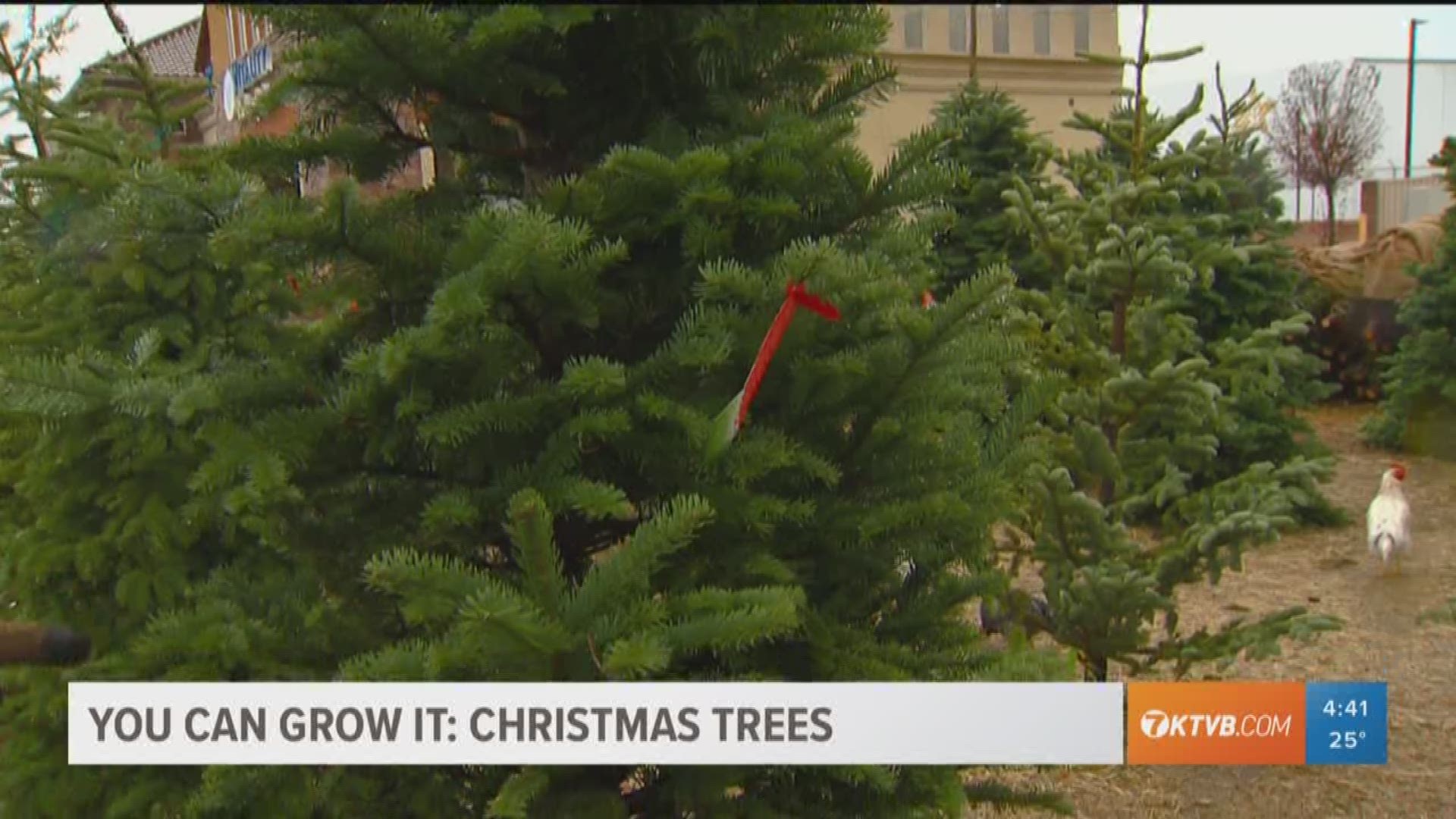Christmas is less than three weeks away, and one of the biggest holiday traditions for many families is picking out their Christmas tree. According to the National Christmas Tree Association, nearly 30 million live Christmas trees will be sold in the U.S. this year.
But fresh-cut trees can be a little pricey, so before you spend big bucks on a real tree, garden master Jim Duthie tells us about the most popular kinds of Christmas trees available, so you can choose the perfect one for your family.
When you’re shopping for a Christmas tree, there are a lot of choices. In fact, there are about 35 kinds and each one differs a little in terms of size, shape, color, fullness and fragrance.
Here are a few of the most popular ones.
According to Jordan Risch of Jordan’s Christmas trees, fir trees are the biggest sellers because of their beauty and fragrance. And among the firs, there’s one that stands out.
“I would say Nobles. Nobles are what people have been buying for years and years, and they’re traditional trees,” said Jordan Risch.
Noble firs have upturned blue-green needles and evenly spaced branches that are perfect for showcasing your favorite ornaments, like this silvertip noble fir.
“This is gaining in popularity because it has that nice open branch structure to it. Some people call it the Pinterest tree because you get a lot of pictures on Pinterest. People come in and say, I want nice open spaces to be able to hang my big ornaments.”
Another variety, the Nordmann fir, is favored for its attractive, dark green foliage, and rounder, softer needles.
“This is a Nordmann fir, and next to a noble, this is probably the second most popular.”
“It’s got a real nice dark, rich green color to it. We really like those.”
Fraser firs are easily recognizable by their needles -- dark green on top and silver underneath. The branches curve up slightly, so they’re stiff and hold ornaments well.
“Both the Fraser and the Nordmann firs have that kind of two-tone look to it.”
And if you’re looking for that Christmasy scent, Fraser firs are probably the most fragrant of them all.
“People come in and ask me all the time… Which one’s going to be most fragrant? The most common answer is, if you put a six-foot tree inside your house, you’re going to know it’s there.”
Finally, the grand fir is a stately looking tree with thick foliage of dark, shiny green needles that are silvery-white on the bottom. Because it’s fast-growing, you can usually get a bigger tree for less money with a grand fir.
But what about those needles falling off before Christmas even gets here?
“You ain’t gonna find no better tree than this here tree. This here tree is built to last. Ain’t no needles coming off this here tree. Okay.”
Your best bet will probably be a Fraser fir.
It’s got the longest-lasting needles…. Some of these trees will last all the way into February.”
“In fact, most firs do. That’s why they’re the most popular Christmas tree.”
How long a tree lasts has a lot to do with when it was cut, the temperature of your home, and how much water you give the tree. Jordan says his trees were cut in late November. Trees at some larger lots and chain stores are cut weeks earlier to fill their larger orders.
“The biggest thing for keeping a Christmas tree healthy throughout the year is keeping it away from any kind of heat source.”
That includes fireplaces and heat vents.
“The tree can’t pull up moisture fast enough to be able to combat that heat that’s blowing directly on it.”
When you buy a tree, ask the lot operators to cut about an inch off the bottom of the trunk. Then give it plenty of water within an hour or two so it will stay fresh.
And some lots, like Jordan’s, will even bundle the tree for you to make it easier to carry it home and set it up in your house.
You can expect to pay anywhere from $45 to $85 for an average-sized tree at most lots, while larger trees and more unusual varieties will cost more.
“So you can see there are a lot of different varieties of evergreen trees for your Christmas tradition.
Last year we reported on a shortage of Christmas trees, which continues to some extent this season.
Christmas trees take about seven to eight years to grow, and not enough of them were planted back then to meet today’s growing demand.
The good news is that there are plenty of trees for sale, but finding the perfect one may be a little harder and cost a little more this year.

